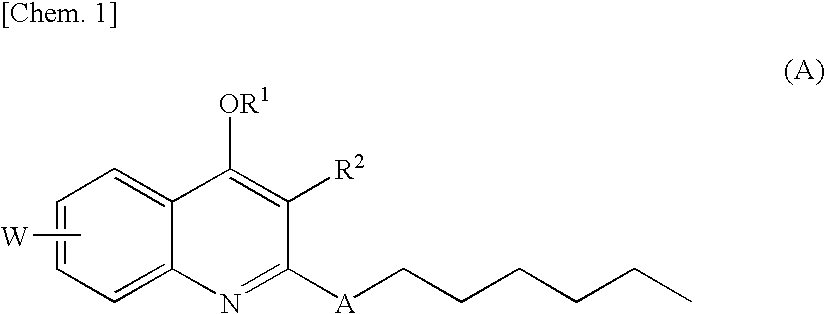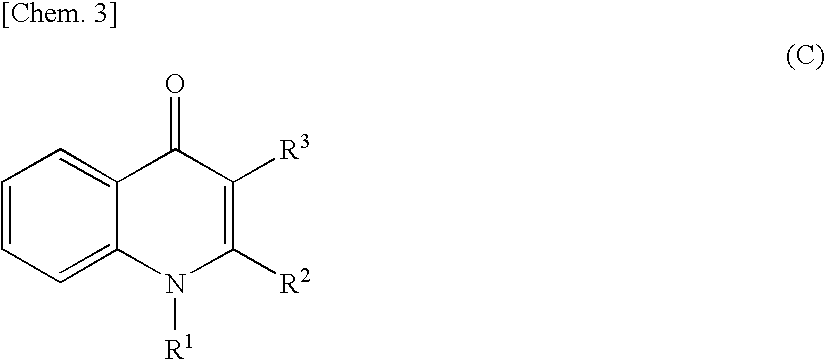Quinolone derivative
a quinolone and derivative technology, applied in the field of quinolone derivatives, can solve the problems of increased risk of diabetes, increased risk of hypertension or hyperlipidemia, and increased risk of impaired glucose tolerance in people with impaired glucose toleran
- Summary
- Abstract
- Description
- Claims
- Application Information
AI Technical Summary
Benefits of technology
Problems solved by technology
Method used
Image
Examples
production example 1
[0371]To a solution of 4-bromoaniline (25 g) and diethyl 2-methyl-3-oxo succinate (30 mL) in benzene (300 mL) was added dropwise acetic acid (3.3 mL) at room temperature, followed by refluxing using a Dean-Stark reflux apparatus for 12 hours. After the reaction mixture was concentrated under reduced pressure, the residue was gradually added dropwise to 100 mL of diphenyl ether which had been previously heated to 270° C., followed by stirring at the same temperature for 1 hour. The reaction mixture was allowed to cool to room temperature, and hexane was added thereto. The precipitated solid was collected by filtration to obtain ethyl 6-bromo-3-methyl-4-oxo-1,4-dihydroquinoline-2-carboxylate (19 g).
production example 2
[0372]To a solution of ethyl 3-chloro-4-oxo-1,4-dihydroquinoline-2-carboxylate (1.1 g) in DMF (30 mL) were added benzyl bromide (0.57 mL) and potassium carbonate (720 mg) at room temperature, followed by stirring for 15 hours. Water was added to the reaction mixture, followed by extraction with ethyl acetate. The organic layer was washed sequentially with water and saturated brine and dried over anhydrous sodium sulfate, and the solvent was evaporated. The residue was purified by silica gel column chromatography (eluent: hexane / ethyl acetate=85 / 15) to obtain ethyl 4-(benzyloxy)-3-chloroquinoline-2-carboxylate (1.24 g).
production example 3
[0373]To an ice-cold solution of 4-(benzyloxy)-2,3,6-trimethylquinoline (1.36 g) in chloroform (25 mL) was added m-chloroperbenzoic acid (75%, 1.35 g), and the mixture was stirred for 4.5 hours. A 1M aqueous sodium hydroxide solution (10 mL) and water (10 mL) were added to the reaction mixture, followed by extraction with chloroform (20 mL). The organic layer was washed sequentially with water and saturated brine, and the solvent was evaporated under reduced pressure. The residue was purified by silica gel column chromatography (eluent: chloroform / methanol=95 / 5) to obtain 4-(benzyloxy)-2,3,6-trimethylquinoline-1-oxide (1.20 g).
PUM
 Login to View More
Login to View More Abstract
Description
Claims
Application Information
 Login to View More
Login to View More - R&D
- Intellectual Property
- Life Sciences
- Materials
- Tech Scout
- Unparalleled Data Quality
- Higher Quality Content
- 60% Fewer Hallucinations
Browse by: Latest US Patents, China's latest patents, Technical Efficacy Thesaurus, Application Domain, Technology Topic, Popular Technical Reports.
© 2025 PatSnap. All rights reserved.Legal|Privacy policy|Modern Slavery Act Transparency Statement|Sitemap|About US| Contact US: help@patsnap.com



